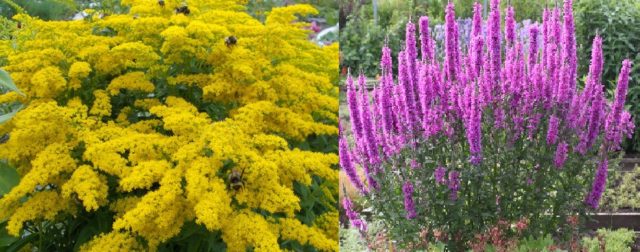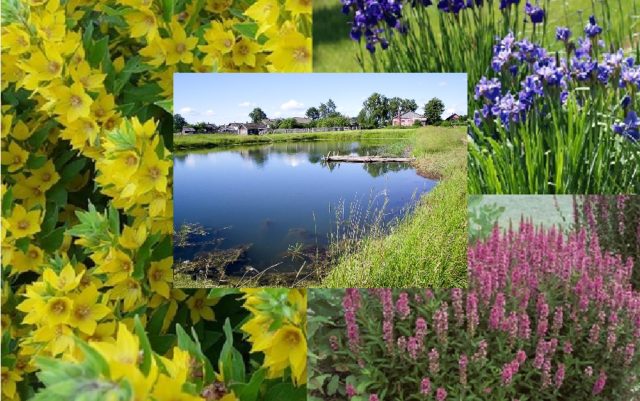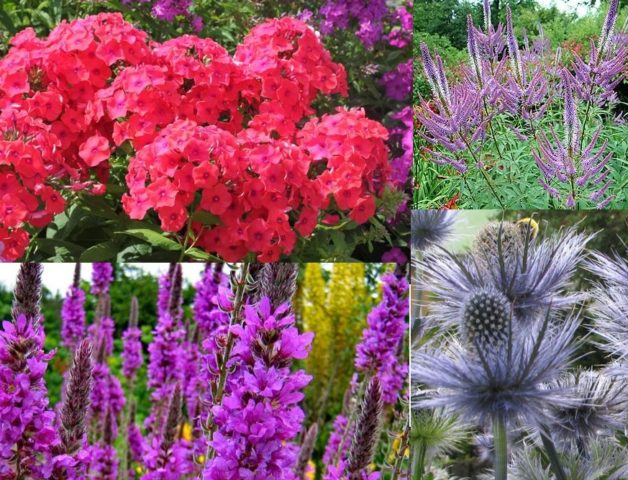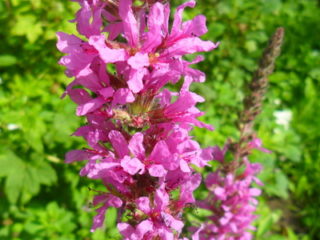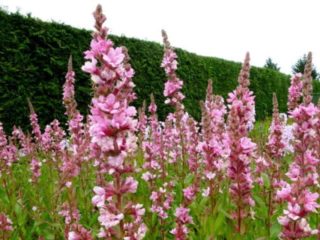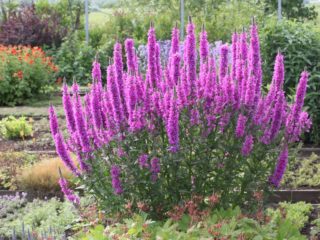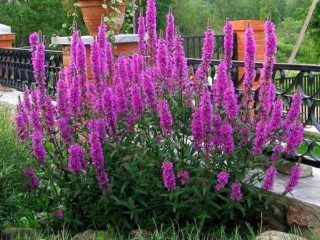Content
In nature, the willow loosestrife Robert (Robert) is found along the shores of lakes and rivers and in places with high humidity. The culture is distinguished by excellent immunity to various diseases and is practically immune to temperature extremes and frost. Loose deer Robert is characterized by decorative qualities and ease of care. This provided him with immense popularity among experienced and novice gardeners.
Description Loosestrife Robert
Plakun-grass (loosestrife) is a perennial plant with long and abundant flowering. The culture forms a large number of seeds. The plant is characterized by high frost resistance.
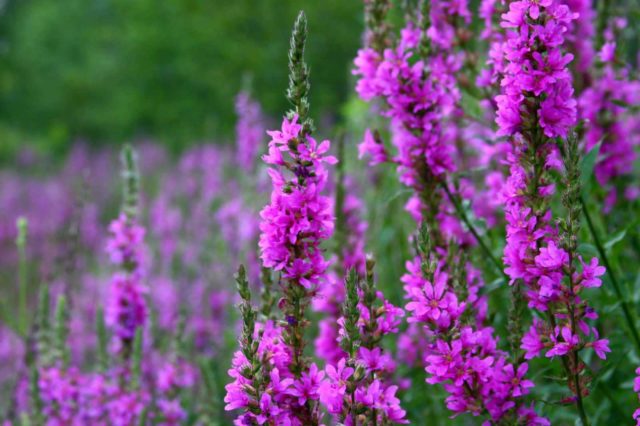
Loosestrife Robert - the owner of long erect stems with pink-purple flowers, each of which has 6-7 petals
Inflorescences located at the ends of the stems are collected in spike-shaped panicles. The height of adult plants is from 50 to 100 cm. When growing on soils enriched with fertilizers and complex fertilizing, the loosestrife can reach up to two meters in height.
One rhizome can have up to 50 tetrahedral stems. Each of them ripens many seeds that can be carried for many kilometers by water and wind. To avoid self-seeding of the loosestrife and thickening of the plantings, it is necessary to collect the seeds in a timely manner.
The culture is distinguished not only by decorative qualities, but also by medicinal properties. A number of vitamins, glycosides, essential oils, tannins and polyphenols are present in the composition of willow loosestrife. The highest concentration of nutrients is observed in the roots, seeds, leaves and inflorescences. The loosestrife has long been used as an antiseptic and an agent that stops blood and heals small cuts. Culture has a calming, anti-inflammatory and restorative effect.
A decoction from the roots is used to treat diseases affecting the upper respiratory tract, headache and toxicosis that develops during pregnancy.
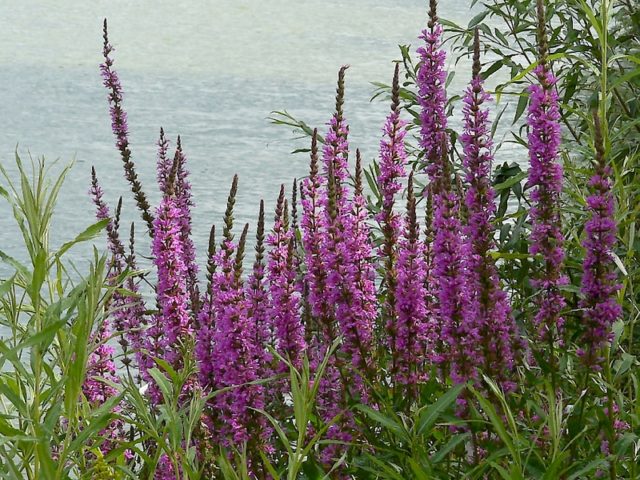
An infusion of loosestrife leaves or flowers is effective for prostatitis, rheumatism, hemorrhoids, various problems with the gastrointestinal tract and neuroses
The broth is prepared from finely chopped fresh plant. For this, 2 tbsp. l. raw materials are poured with two glasses of boiled water and kept in a steam bath for 15 minutes. After straining, the broth is taken warm, 50 ml per day.
Application in landscape design
The natural habitat for the culture is swampy places, meadows with high humidity, the banks of lakes and rivers. Derbennik Robert (pictured) can be used in landscape design for landscaping ponds, decorating various mixborders, flower beds and flower arrangements. It is preferable to add crops in the neighborhood that have similar characteristics. When making out a garden plot, adhere to the following recommendations:
- Yellow goldenrod looks very harmonious next to the violet-lilac inflorescences of Robert loosestrife.
- Spotted loosestrife and Siberian iris are excellent neighbors with which you can create contrasting compositions along ponds and artificial dams.
- A mixborder of phlox, veronicastrum, erythematosus and loosestrife in combination with cereals will adorn any garden plot.
Derbennik Robert is also suitable: steepless, bells, lyatrice, heuchera and tansy.
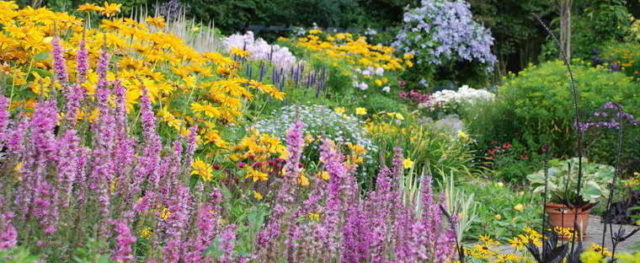
Plakun-grass is characterized by fast growth, therefore it is preferable to plant it next to hardy and strong crops
Breeding features
In addition to the seed method, Robert's loosestrife is propagated by cuttings and the method of dividing the rhizome. The latter option is considered the most difficult, since the plant has a stiff root system, which is not easy to divide into parts. It is necessary to proceed according to the following algorithm:
- The bottom of each pit is covered with compost and fertile soil.
- The separated areas of the rhizome, together with the stems extending from them, are planted with holes.
- Cover with soil, water and mulch.
Cuttings for propagation are harvested in early June. It is necessary to cut off the root shoots. Until the root system develops, the cuttings are kept in bottles or jars filled with clean water.
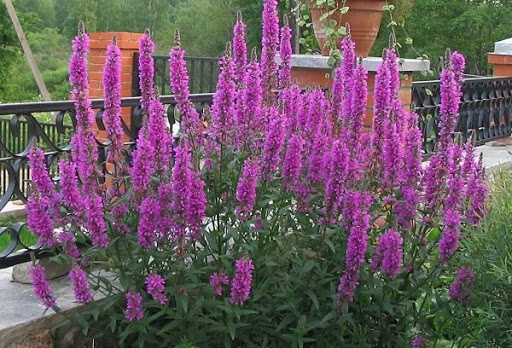
If the collection of seeds is not planned, it is worth immediately pruning the faded inflorescences to exclude self-seeding
Growing seedlings of willow loosestrife Robert
Derbennik Robert is distinguished by excellent adaptability to environmental conditions. It is preferable to grow it in well-lit places.
The soil should consist of fertile, slightly acidified soil. Excess nitrogen is detrimental to the shrub.
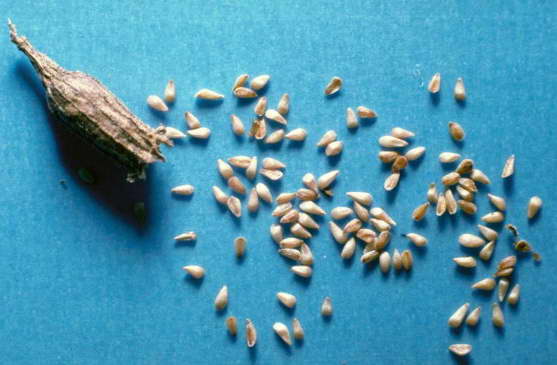
Seeds are harvested every year after the end of the flowering period
Planting material for seedlings is sown in March. The temperature should be between 18-22 ° C. After 25-30 days, the first shoots appear. The willow loosestrife Robert, which was planted from seed, begins to bloom only for 2-3 years. When 3 true leaves appear on the seedlings, the seedlings dive into separate containers.
Planting and caring for the willow loaf Robert in the ground
Loose deer Robert is very unpretentious and does not require special care. The seeds of the plant must be stratified before being planted in the ground.
Recommended timing
The seedling method guarantees the best results. They resort to it so that Robert's loosestrife blooms in the first year. Sowing seeds is carried out in March. Pots or other containers are filled with soil, on the surface of which seeds are spread. The soil is moistened with a spray bottle. Boxes with seedlings are covered with plastic wrap or glass and placed in a well-lit place with a temperature of +19 ° C and above, which is necessary to create a greenhouse effect. Landing in open ground is carried out only after the disappearance of the threat of frost.
Site selection and preparation
Peat soils with a low nitrogen and alkali content are best suited for Robert Loosestones. Loose or dense soils are contraindicated for a plant.
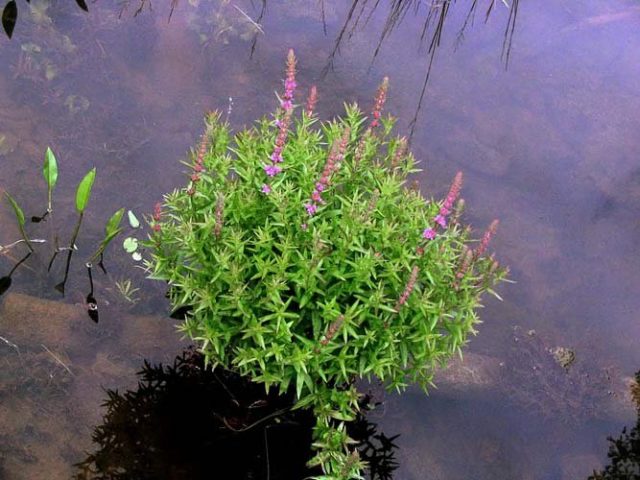
You can plant a loosestrife even in shallow water conditions at a depth of up to 20 cm
Robert grows well in both well-lit and slightly shaded garden areas. They must be protected from winds that can break or damage the stems of the bush. The earth is pre-dug up and enriched with humus.
Landing algorithm
It is necessary to maintain an interval of about 0.5 m between the holes in the open ground. The distance between the holes for seedlings should be at least 30 cm. Organic fertilizer is applied to the bottom of the soil. Seedlings are placed in the holes, after which they are provided with abundant watering.
Watering and feeding schedule
The willow loafer Robert is a moisture-loving plant that is not afraid of waterlogging. A short drought is not critical for the plant. When planting bushes near a reservoir, they do not need regular watering. Prolonged drought entails the loss of the decorative qualities of the culture. During the first year after planting in open ground, plants need care in the form of loosening the soil around the bush and abundant watering during the dry period (2-3 times a month).
In order for the bushes to fully develop, 10 buckets of high-moor peat are added to the soil for every 1 m2 garden plot. The soil is fed after planting and mulched.Peat with compost allows not only fertilizing the soil, but also contributes to the retention of moisture in it. To improve the decorative qualities, mineral dressings are used, the nitrogen content of which is minimal.
Weeding, loosening, mulching
Before planting seeds or seedlings, it is necessary to weed and loosen the soil. Organic mulching is an excellent alternative to mineral complex fertilizers.
Pruning
Derbennik Robert is distinguished by a tendency to self-seeding. To prevent unwanted overgrowth of the bushes, they get rid of faded peduncles before the seeds ripen. With the onset of spring, it is recommended to perform a sanitary pruning procedure by removing the ground mass left over from last year. Pruning can also be carried out in the fall, when the summer cottage season comes to an end. The ground parts are disposed of with a secateurs.
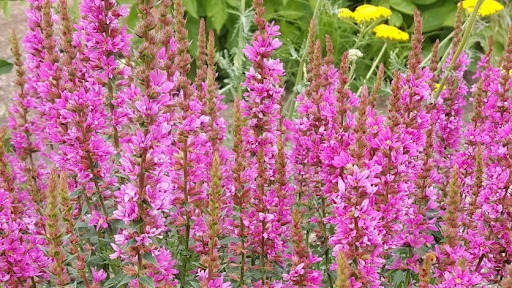
The dried bushes of Robert's loosestrife are great for decorating conservatories and greenhouses.
Wintering
Willow loosestrife Robert tolerates temperature extremes and the cold season. For a plant to successfully survive the winter, it does not even need shelter in the form of dry leaves and spruce branches.
Pests and diseases
The perennial crop is very resistant to diseases and pests. In the case of growing loosestrife Robert in a flower garden, you only need to make sure that aphids do not migrate to him from neighboring plants. If parasitic insects are found, the bushes should be treated with special preparations (Aktara, Iskra, Fufanon).
Conclusion
Willow loosestrife Robert (Robert) is a perennial crop, which is characterized by high frost resistance, excellent immunity and decorative qualities. The plant is suitable for creating various compositions, mixborders and decorating garden plots. The loosestrife also has therapeutic value. The culture contains substances and compounds that have a beneficial effect on the gastrointestinal tract, relieve headaches and toxicosis, and increase the body's defenses.
